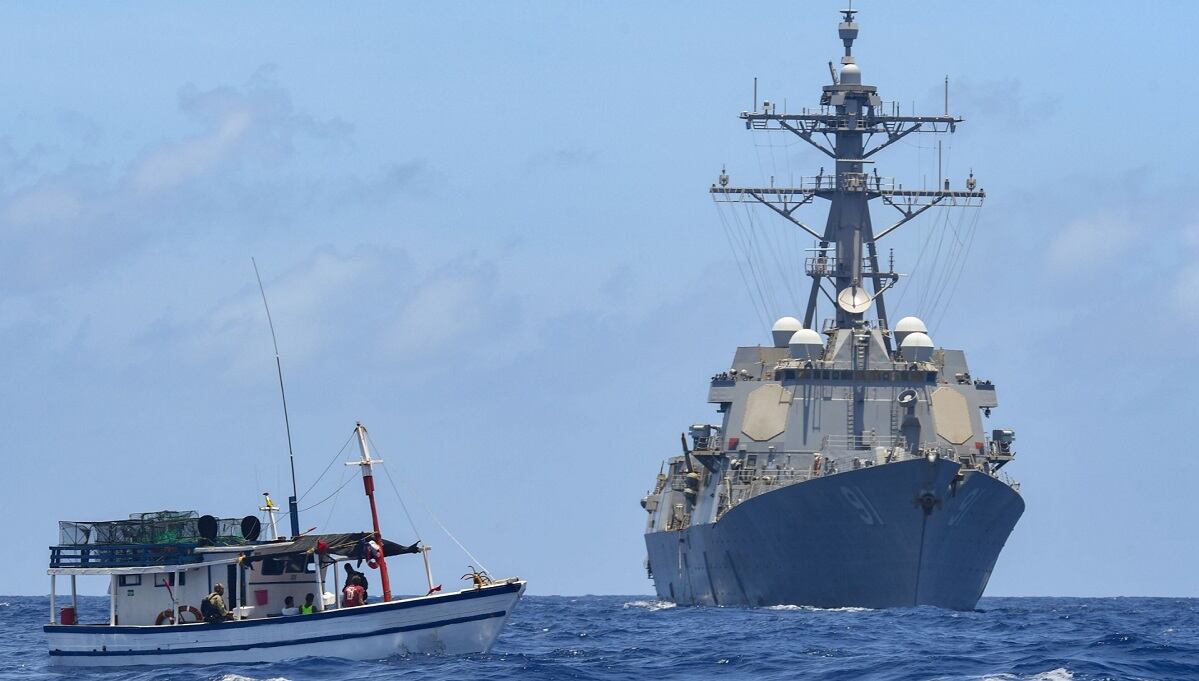The Navy fleet’s overall material condition declined slightly in fiscal 2022, “resuming a slight but steady negative trend” that has occurred since fiscal 2017, according to the Navy’s annual Board of Inspection and Survey, or INSURV, report released by the Navy on Friday.
The report notes that the negative trend “is more notable” due to changes in INSURV calculations that adhere more closely to Joint Fleet Maintenance Manual metrics.
INSURV also removed major system demonstration and administrative program scores from the INSURV Figure of Merit, or IFOM, calculations.
“The updated IFOM calculation generates a more focused measure of overall material condition,” the report states.
Go here to read the full INSURV report that was sent to Congress.
The board changed its ship inspection waiver policy in FY20, requiring vessels to be inspected every three years or be considered overdue.
At the end of FY22, roughly 44 percent of vessels were overdue for inspection, according to the report.
The report also warns that INSURV does not have enough people to inspect every ship every three years, and notes that it had to lean on Regional Maintenance Center technicians to serve as inspectors.
RELATED

“INSURV does not possess sufficient funded billets to perform all inspection elements, especially the most specialized, specific technical requirements,” the report states.
The report found that the material condition of surface ships, submarines and aircraft carriers “all declined slightly from FY 2021,” but that the largest year-to-year drop occurred in the Military Sealift Command Fleet.
“Overall, several functional areas and subsystems remain degraded or show declining trends, indicative of areas where material readiness is stressed,” the report states.
INSURV conducted 80 material inspections of in-service vessels in FY22, a 72 percent increase in total inspections compared to the six-year average, the report states.
Inspectors also conducted 23 trials of new-construction ships, along with eight surveys.
Of those, the Virginia-class submarine, Independence-class littoral combat ship, Spearhead-class expeditionary fast transport, ship-to-shore connector, yard tug and barracks barge programs performed well on trials.
“The remaining programs experienced significant deviations from OPNAV trial requirements, missed key program milestones, or had declining trial performance during the fiscal year,” according to the report.
INSURV conducts a range of inspections of ships already in the fleet and those being introduced to the fleet in order to ensure they will be able to meet their mission, the report states. The office also conducts surveys on ships at the end of their service lives when required.
INSURV scores ships based on the “weighted average of the material condition of equipment in functional areas” that are generally aligned along roughly 156 systems and about 551 sub-systems.

The surface fleet showed “a slightly decreasing trend” in the average IFOM score, and the scores for FY22 were below the six-year average.
All told, INSURV evaluated 14 functional areas as degraded in the surface fleet ships it assessed.
The submarine community “showed a slight decline from FY 2021 and was just below the 6-year average,” according to the report. Two functional areas were evaluated as degraded in the FY22 assessment.

INSURV notes that carrier data “has been difficult to trend due to the small samples sizes that result when a population of ten to eleven CVNs was historically inspected an average of once every five to six years.”
To increase the sample size and make the trends more relevant, INSURV expanded the overall trend time period to 12 years and grouped the carriers into multi-year periods, according to the report.
The carrier scores “remained consistent with FY 2021 result and equaled the 6-year average,” the report states.
Eleven functional areas were evaluated as degraded.

The scoring averages for the Military Sealift Command fleet were lower in FY22 than the six-year average, according to the report.
“FY 2022 scores and trends indicate nearly all functional areas experience a decline over previous years,” the report states, noting a “precipitous drop” in IFOM scores for that fleet.

Geoff is the managing editor of Military Times, but he still loves writing stories. He covered Iraq and Afghanistan extensively and was a reporter at the Chicago Tribune. He welcomes any and all kinds of tips at geoffz@militarytimes.com.








